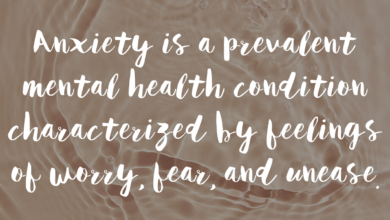Emotional Labor: The Cost of Suppressing Emotions

Published on: 27 Jan 2023
Putting on a smile at work is a shared experience that many commonly feel in their career. People swallow their emotions all the time to keep the peace and avoid bringing personal problems upon others. This type of labor, called emotional labor, can result in a big cost to your mental health if not addressed.
What is Emotional Labor?
Emotional labor is a form of emotional regulation that requires you to suppress your feelings (whether that’s a negative emotion or even positive emotion) for the sake of others. The term can also refer to small, unpaid tasks people complete to keep others happy. Over time, swallowing your feelings can lead to stress, happiness, and burnout, which is why it’s essential to find ways to ease your burden.
Keep reading to learn more about emotional labor, including the types you might experience, examples, and how to cope if you’re struggling.
Types of Emotional Labor
When you ask questions like what is emotional labor, it’s important to consider where the term originated. Sociologists like Dr. Arlie Hochschild have divided emotional labor into two main categories: surface acting and deep acting.
“Emotional labor takes place in almost any setting — work, romantic relationships, friendships, family life, and even online. Given that, it’s easy to see how depleting it can be if you’re facing emotional labor in one or more of these realms.”
Surface acting
Surface acting involves hiding your true emotions and pretending that you feel differently. While it doesn’t require you to actually change your feelings, it does ask you to present emotions you don’t really feel. Studies show that surface acting can be a significant source of stress. You might see this type of emotional work in the workplace as emotional regulation is very common there.
“It may be something like a boss requiring you to serve each customer with a smile even if a customer is rude, and then going home.”
Deep acting
Deep acting is a lengthy process in which people work to change their feelings to match the expectations of others. For example, someone might practice meditation to feel happier on the job. While deep acting requires more effort than surface acting, research suggests that surface acting causes more harm.
“Deep acting might result from your partner expecting you to be the one who manages to get the groceries and arrange a child’s doctor appointments and the dog’s vet visits. It all adds up to invisible efforts that are mentally exhausting.”
Examples of Emotional Labor
While the term emotional labor was initially used to refer to interactions in the workplace, now it can be used to discuss a broader range of behaviors. As a result, you can find emotional labor examples in many settings.
In the workplace
Employees may be asked to perform emotional labor in customer interactions or with co-workers. Common examples include:
- Being told to smile or display cheerful behavior while on the job
- Not talking back and behaving professionally even when someone is rude or hurtful
- Being penalized for emotional behavior, like crying at work
In relationships
While professionalism isn’t usually a requirement in personal relationships, people may still feel obligated to suppress their emotions. Common emotional labor examples in relationships include:
- Burying your feelings to avoid an argument
- Feeling pressured to support your partner, even when it’s not reciprocated
- Taking on unpaid and unappreciated tasks, like cleaning or childcare, when your partner doesn’t do the same
Too much emotional labor can lead one partner to emotional exhaustion.
The Mental Cost of Emotional Labor
Emotional labor may be invisible, but it’s still a form of labor. Managing your emotions and modifying your behavior requires significant effort, especially when done for long periods. It can eventually lead to burnout, a form of emotional exhaustion caused by extreme stress.
“Exhaustion and depletion are two of the most common mental costs of emotional labor as the efforts involved in emotional labor are draining intellectually, emotionally, and sometimes physically. When one person is continually managing the emotional labor tasks at work or in personal relationships, it exacts a mental toll that can be hard to measure until one has a break from it and realizes how depleted they are each day from these often invisible tasks.”
Emotional labor, in excess, can also lead to:
- Cognitive Dissonance: When people display emotions that aren’t in line with their true feelings, it can create cognitive dissonance. Internal inconsistencies can increase stress levels and cause mental distress. These feelings of inauthenticity can also contribute to imposter syndrome.
- Burnout: In the workplace, studies show that emotional labor negatively impacts job satisfaction and employee well-being. In addition, when employees experience symptoms of burnout, it can also lead to a decline in job performance. Some research even suggests a link between surface acting and employee turnover.
- Poor Physical Health: Emotional labor takes a mental toll, and the stress of hiding your emotions can also impact your physical health. We know that emotional labor can increase the risk of health complications like high blood pressure and heart disease. This is why people need to find healthy ways to deal with the stress that emotional labor can cause.
How to Deal with Emotional Labor
Emotional labor can be exhausting, but there are several ways to cope with this hidden form of stress. While you won’t always be able to express your true emotions, the right strategies can reduce emotional labor’s toll on your well-being.
1. Set emotional boundaries
Feeling pressured to behave in a certain way can make you feel like you don’t have control over your life. Setting healthy boundaries can help you regain a sense of control and prevent burnout. Be bold, say no to tasks you don’t have time for, or speak up when you feel uncomfortable.
2. Try mindfulness
Mindfulness meditation can make you more aware of your feelings, even when you can’t express them openly. It can also help you improve your emotional regulation skills, which can make the pressure of emotional labor more manageable. There are many ways to incorporate mindfulness practices into your day-to-day life.
3. Find healthy outlets
Bottling up your emotions won’t make them go away. Suppressing feelings can put physical stress on your body. Instead of hiding your feelings, find healthy ways to process and express them. Whether you vent to a trusted friend, write in a journal, or use exercise to burn off stress, finding ways to let your feelings out is important.
4. Practice self-care
Even though emotional labor is unseen, it takes a great deal of effort and self-care is important. When you’re engaging in stressful activities, take care of yourself. Set aside time for relaxation and give yourself a chance to recuperate when you’re feeling drained.
5. Take a break
If emotional labor is starting to feel like too much, it’s okay to give yourself a break. A short break can help you to recharge after a draining experience. Studies show that taking rest breaks throughout the day can reduce stress and increase productivity.
“Recognizing the toll of emotional labor is the first step, since so many people have come to accept “this is just how it is.” Find support to discuss how it impacts your life. It could be a trusted friend, a moms’ group, a group of co-workers, or a licensed therapist. Beginning to make small changes to decrease the emotional labor you’re doing can go a long way to lessen the exhaustion and stress.”
Learning to Cope with Talkspace
While emotional labor is essential in some environments, it can still be challenging to manage. When you feel obligated to perform specific tasks or behave a certain way, it can be hard to express your true feelings. With the help of online therapy at Talkspace, you can learn to manage emotional labor healthily, get adequate emotional support, and learn better emotion management.
Your therapist can answer questions about emotional labor and help you understand how this process impacts your day-to-day life. If emotional labor leaves you drained, don’t be afraid to ask for help. Talkspace can give you ways to cope.
Sources:
- Grandey AA. When “The show must go on”: Surface acting and deep acting as determinants of emotional exhaustion and peer-rated service delivery. Academy of Management Journal. 2003;46(1):86-96. doi:10.2307/30040678. https://psycnet.apa.org/record/2003-01929-004. Accessed October 24, 2022.
- Qi X, Ji S, Zhang J, Lu W, Sluiter JK, Deng H. Correlation of emotional labor and cortisol concentration in hair among female kindergarten teachers. International Archives of Occupational and Environmental Health. 2016;90(1):117-122. doi:10.1007/s00420-016-1179-6. https://link.springer.com/article/10.1007/s00420-016-1179-6. Accessed October 24, 2022.
- Jeung D-Y, Kim C, Chang S-J. Emotional labor and Burnout: A review of the literature. Yonsei Medical Journal. 2018;59(2):187. doi:10.3349/ymj.2018.59.2.187. https://www.ncbi.nlm.nih.gov/pmc/articles/PMC5823819. Accessed October 24, 2022.
- Aung N, Tewogbola P. The impact of emotional labor on the health in the workplace: A narrative review of literature from 2013–2018. AIMS Public Health. 2019;6(3):268-275. doi:10.3934/publichealth.2019.3.268. https://www.ncbi.nlm.nih.gov/pmc/articles/PMC6779598. Accessed October 24, 2022.
- Goodwin RE, Groth M, Frenkel SJ. Relationships between emotional labor, job performance, and turnover. Journal of Vocational Behavior. 2011;79(2):538-548. doi:10.1016/j.jvb.2011.03.001. https://www.sciencedirect.com/science/article/abs/pii/S000187911100025X. Accessed October 24, 2022.
- Mann S. ‘people-work’: Emotion management, stress and coping. British Journal of Guidance & Counselling. 2004;32(2):205-221. doi:10.1080/0369880410001692247. https://www.tandfonline.com/doi/abs/10.1080/0369880410001692247?journalCode=cbjg20. Accessed October 24, 2022.
- Guendelman S, Medeiros S, Rampes H. Mindfulness and emotion regulation: Insights from neurobiological, psychological, and clinical studies. Frontiers in Psychology. 2017;8. doi:10.3389/fpsyg.2017.00220. https://www.ncbi.nlm.nih.gov/pmc/articles/PMC5337506/. Accessed October 24, 2022.
- Rice SM, Kealy D, Ogrodniczuk JS, Seidler ZE, Denehy L, Oliffe JL. the cost of bottling it up: Emotion suppression as a mediator in the relationship between anger and depression among men with prostate cancer. Cancer Management and Research. 2020;Volume 12:1039-1046. doi:10.2147/cmar.s237770. https://www.ncbi.nlm.nih.gov/pmc/articles/PMC7023872/. Accessed October 24, 2022.
- Dababneh AJ, Swanson N, Shell RL. Impact of added rest breaks on the productivity and well being of workers. Ergonomics. 2001;44(2):164-174. doi:10.1080/00140130121538. https://pubmed.ncbi.nlm.nih.gov/11209875/. Accessed October 24, 2022.
Talkspace articles are written by experienced mental health-wellness contributors; they are grounded in scientific research and evidence-based practices. Articles are extensively reviewed by our team of clinical experts (therapists and psychiatrists of various specialties) to ensure content is accurate and on par with current industry standards.
Our goal at Talkspace is to provide the most up-to-date, valuable, and objective information on mental health-related topics in order to help readers make informed decisions.
Articles contain trusted third-party sources that are either directly linked to in the text or listed at the bottom to take readers directly to the source.
Talkspace mental health services
Convenient and secure online therapy from the comfort of your home
Psychiatric treatment from a licensed prescriber
Relationship-centered therapy that connects you and your partner
Specialized online therapy for ages 13-17
Source link
#Emotional #Labor #Cost #Suppressing #Emotions




